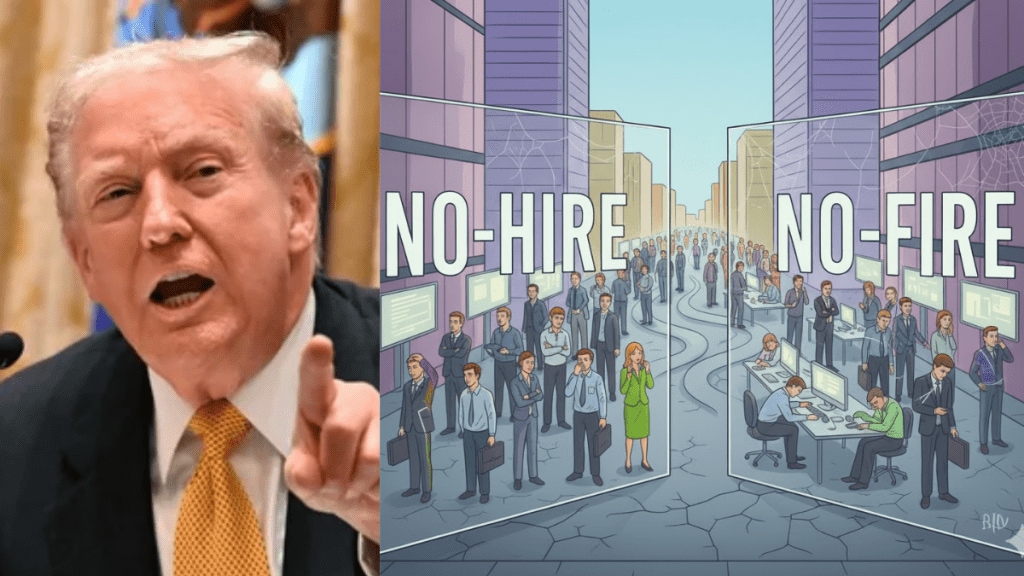For more than a year, economists described the US labour market as “static.” It was not shrinking, but it was not growing either. Layoffs were steady, unemployment remained low by historical standards, and hiring was sluggish.
Workers who wanted to change jobs struggled, yet most employees felt secure in the positions they already held.
Now, a wave of job-cut announcements from some of the country’s biggest employers is raising alarms that this delicate equilibrium may be coming to an end.
A season of new layoff
This fall, major companies including Amazon, Verizon, and Target announced restructuring plans that involve cutting jobs, an uncomfortable shift for an economy that has largely avoided mass layoffs since the immediate aftermath of the pandemic.
“All the signs point to us moving from a ‘no-hire, no-fire’ labour market to ‘no-hire, start-to-fire’ labor market,” said Heather Long, chief economist at Navy Federal Credit Union to Yahoo Finance!
Their concerns are reinforced by a spike in WARN notices, formal alerts companies must issue ahead of large layoffs. In October, WARN filings jumped in 21 states, hitting 39,006, among the highest levels on record since 2006.
The total is still below the massive layoffs of the 2020 pandemic, the Great Recession, and spikes seen earlier this year, but the trend is unmistakable: more companies are shedding workers.
What the official data shows and doesn’t
The US is about to get its first Bureau of Labour Statistics unemployment update since August, due to delays caused by the government shutdown.
But that report will only cover September, weeks before most of the new layoff announcements were made. That means official numbers may temporarily understate how quickly the labour market is cooling.
Before this string of job cuts, layoffs and the unemployment rate had appeared relatively stable. Yet hiring remained weak. Job seekers confronted long searches and fewer openings, as the economy generated minimal new positions.
Now economists are asking whether the recent uptick in planned layoffs signals a more significant shift.
“One thing on the soft data that I’ve been hearing more and more, talking to a lot of people … is four to six weeks ago we were still in this kind of ‘no-hire, no-fire’ mode,” Fed Governor Chris Waller said Monday. “They’re starting to talk about layoffs. They’re starting to plan for them in the future. It could be AI-related; it could be a lot of other things.”
What led to the shift?
Across industries, several forces are converging to push the labor market away from its unusually calm post-pandemic phase and toward something far more turbulent
High-profile layoffs are accelerating
Tech giants and federal agencies alike have started trimming their workforces. Companies such as Intel, Microsoft, and Accenture have announced significant job cuts, while federal workforce reductions tied to policy changes are also contributing to overall losses.
The cumulative effect is a broader shift from a conservative “don’t hire, don’t fire” approach to what some analysts describe as a cautious but deliberate “no hire, more fire” reality.
Companies are freezing hiring
High interest rates, inflation-control measures, and ongoing geopolitical tensions have slowed corporate expansion plans. With fewer new jobs being posted, workers laid off in this environment face longer unemployment spells and fewer opportunities.
Automation and AI are disrupting white-collar work
AI adoption is beginning to displace administrative, operational, and entry-level white-collar roles, jobs that, historically, have acted as a buffer during economic slowdowns. This structural shift means some eliminated positions may not return.
Labour supply is tightening
Stricter immigration enforcement and declining migrant flows have reduced the supply of workers in several industries. That tighter labor pool has complicated hiring, but it hasn’t prevented companies from cutting when budgets tighten.
An era of stability ending
The “no-hire, no-fire” labour market emerged partly by accident: employers scarred by pandemic-era worker shortages were reluctant to fire staff, even when business slowed.
At the same time, they hesitated to add new positions amid lingering economic uncertainty. The result was a kind of labour market stasis.
In 2025, that period appears to be ending.
With layoff announcements rising, hiring freezes persisting, and structural shifts driven by AI and policy changes, the US labour market is inching toward a more traditional cycle, one in which companies both hire and fire in response to conditions.
Whether this transition becomes a full-fledged downturn or simply a normalisation after an unusually calm period will depend on the months ahead. But the message from companies, economists, and policymakers is increasingly clear: stability is giving way to change.

